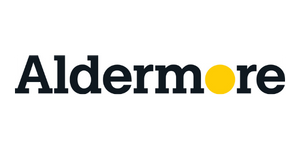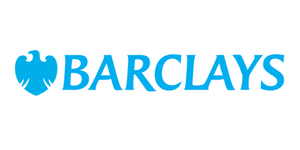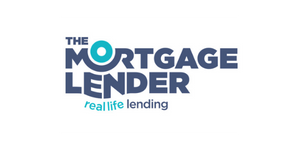Getting an HMO mortgage
If you’re looking to let out a multi-room property to multiple occupants who aren’t related, then you’ll need to be aware of Houses in Multiple Occupation (HMOs) legislation. Unfortunately for Buy-to-Let landlords, different local authorities will have different criteria as to what classes as an HMO. They will also have different criteria as to what needs to be licenced.
Perhaps more frustratingly, mortgage lenders can also vary in their definition of an HMO. For that reason, it can be advantageous to work with an HMO mortgage broker when looking for Houses of Multiple Occupancy mortgages.
WHAT IS AN HMO MORTGAGE?
Investing in a Buy-to-Let property involves understanding a range of landlord responsibilities, laws and regulations, including those related to HMOs which can affect getting a mortgage.
An HMO is broadly defined as any property in which a washing or cooking area, or a toilet, is shared by three or more people from two or more “households”. A household in this context can be a family, a couple or a single person.
Usually, each household in the property will have a separate tenancy agreement with the landlord, although there can be exceptions to this. For example, there can be cases where four students sharing a house can have a single overall tenancy agreement. In this situation, the law would still consider them to be four separate households.
Other examples of HMOs can include shared houses, hostels, and shared worker accommodation. They may also be referred to by other phrases such as multi-lets, or multi-unit properties.
An HMO mortgage is when you obtain a mortgage on this type of property. They typically fall under the category of a Buy-to-Let mortgage.
WHAT IS THE CRITERIA FOR AN HMO MORTGAGE?
The criteria for an HMO mortgage can and likely will vary from lender to lender. However, the principles remain fairly constant with that of a standard Buy-to-Let mortgage.
There are some distinct differences that lenders will typically apply to HMO mortgages. Examples of some of the typical areas of HMO criteria are as follows:
- Experience – HMO mortgage lenders typically don’t consider first-time buyers or landlords. Applicants will likely need a minimum of a 12-month track record of owning a Buy-to-Let.
- Occupancy – The maximum number of bedrooms allowed by most is eight. However, there are lenders that may consider more.
- Client types – Loans are available in personal names and limited companies. They are also available for portfolio landlords.
- Loan sizes – Rental cover will be looked at on a multi-let basis. This invariably will give a greater loan size than a typical single-let dwelling.
- Loan-to-Value (LTV) – Typically restricted to 75%, but some lenders will consider more. Loan size may also be relevant to the maximum loan-to-value permitted.
- Property value – the minimum HMO property value is usually £100,000. However, this may be increased in London and as with all criteria, this amount may vary with a few lenders not imposing any minimum property value.
DO I NEED A LICENCE FOR AN HMO?
Certain HMOs must be licensed by the local authority if they meet specific criteria. This applies if it has at least three storeys and five or more occupants. These five or more occupants must make up at least two households for it to apply.
Local councils can add additional licensing, on top of the mandatory requirements from the central government for licensing. Additional licensing requirements can be introduced by local authorities in some circumstances. For example, certain HMOs, or those in a certain area, have been shown to have a greater fire risk.
If you are looking to operate an HMO, it’s important to check with your local council whether a licence is required. Failing to do so where necessary is a criminal offence and can result in fines worth tens of thousands of pounds in England and Wales.
WHO CAN LIVE IN AN HMO?
Definitions of HMOs differ between local authorities and lenders, causing confusion for tenants and homeowners about occupants.
For a house to be an HMO, there needs to generally be three or more people living there and sharing facilities. These people can’t be related to each other and don’t own the property.
The shared facilities would include the kitchen, bathroom, and designated communal areas. There are no rules stating exactly who can or can’t live in an HMO, but generally you would expect tenants to be adults. Typically, tenants are students living away from the family home, or professionals who want to live close to work.
Many people ask if a landlord can live in an HMO. Unfortunately, if you intend to rent the property out, you’ll be unable to live in it. This is because the product is geared towards the whole house being used as a source of revenue, rather than your occupancy.
GETTING THE BEST HMO MORTGAGE RATES
HMO properties offer high rental returns but come with higher mortgage rates due to perceived risk by lenders.
The size of the deposit or equity affects mortgage interest rates. Some lenders offer lower rates with higher fees, although keep in mind that the lowest rate may not always be the best value for your borrowing needs.
The type of mortgage product chosen can affect the interest rate charged, with fixed rates generally higher than variable rates, and longer fixed terms costing more.
IMC Mortgage Brokers can help navigate the complex world of HMO mortgage rates for you. Reach out today and we will pair you with one of our expert HMO mortgage advisors.
FINDING THE BEST HMO MORTGAGE LENDERS
HMO mortgages are a specialised niche in the market, therefore obtaining one from your normal high-street lender isn’t always possible and a specialist lender would be required. Each lender may have different criteria for lending, such as limits on rooms or storeys.
HMO mortgage lenders have different limits and requirements. IMC Mortgage Brokers can help find the best rates for landlords looking to buy multi-unit properties. Contact them for assistance.
CAN I GET A LIMITED COMPANY HMO MORTGAGE?
Yes, it’s entirely possible to get an HMO mortgage for a limited company. Tax changes and new laws have led to growth in Limited Company Buy-to-Lets and HMOs. Demand is always increasing for limited company HMO Mortgages.
Although there are fewer HMO mortgages available than standard single dwelling Buy-to-Lets, with an increasing choice of lenders, now is the best time to obtain one.
If you’re looking to obtain a Limited Company HMO mortgage, get in touch today.
STUDENT BUY-TO-LET MORTGAGES
In the majority of cases there will be multiple occupants in a Buy-to-Let student property, therefore the lender’s rental income criteria will be assessed as that of an HMO-style accommodation. Typically, if you let the property to 4 or fewer students, it will not come under the classification of an HMO.
Calculating how much you can borrow for a student Buy-to-Let is predominantly done by using the level of rentable income received or expected for the property.
As many Buy-to-Let student accommodations have multiple occupants, usually more than one tenancy agreement is in place. This means the rent to loan ratio tends to be adopted from a lender’s HMO criteria, although this is not necessarily always the case.
The calculations below, although not a set rule for all lenders, will serve as a good indicator of what to expect. You may notice a slight variation if you’re in a higher tax bracket.
Single occupancy – 125% at 5.5% interest
Single occupancy higher rate taxpayer – 145% at 5.5% interest
Multiple occupancy (HMO) – 170% at 5.5% interest
Remember, all lenders assess you differently, with other influencing factors such as the type of scheme you apply for.
For example, a 5 year fixed term may enable more borrowing to be agreed. To ensure you are obtaining the best deal to maximise your rental profits, reach out today.
ADVANTAGES OF STUDENT BUY-TO-LET PROPERTIES
When assessing the validity of a student Buy-to-Let, as with any other investment you should always look at the pros and cons. Here are a few of the advantages:
- A student let can provide a good rental yield. Many are done on a multiple occupancy basis, in turn, providing higher rental returns.
- You may be able to get a guarantor for the students’ rent, giving you greater security in knowing the rent will be paid.
- Purpose-built student accommodation can be very expensive and having an alternative for students gives a good source of possible tenants.
- Student accommodation is typically a long-term need. This is because as further education increases, students want good value accommodation near their place of study.
- It can be a very good way of financially supporting your own children through their time at university.
- Students can be less demanding than a typical tenant and although this does not diminish your responsibilities as a landlord, it does perhaps mean you will not be troubled with more minor issues.
DISADVANTAGES OF STUDENT BUY-TO-LET PROPERTIES
As with any investment that offers any positives, it is always prudent to offset these against any disadvantages. Here are a few to consider:
- Although this doesn’t apply to all, some students may not have the same care to their surroundings than a single family occupancy.
- As with any rental property, there is no guarantee that you will consistently have the property fully occupied. Therefore, ensure you budget for any potential rental voids.
- Do expect to have competition. In areas of demand, other investors will also be looking to benefit, including any accommodation offered by universities.
- There is no guarantee of future property prices, and the value of your asset can go down as well as up.
- You will have the ongoing responsibilities of a landlord that may also include legal responsibilities. This can include housing health and safety regulations.
CAN I GET A SECURED LOAN ON AN HMO PROPERTY?
It is possible to get a secured loan if you wish to raise some capital against an HMO property you own. There are many reasons this for this, such as:
- Home improvements
- Assist with the purchase of another property
- Debt consolidation
Secured loans are available for HMOs and work the same way as other Buy-to-Let secured loans. They’re a popular form of borrowing, as on many occasions it’s possible to borrow more than a standard mortgage.
Rates and fees can be higher than those of a standard mortgage, so ensure you carry out your research wisely and consider all options. We have access to HMO mortgage experts, so if you’re looking to obtain some professional advice, reach out today.
HMO mortgage broker
At IMC Mortgage Brokers, we understand how specialised certain areas of the market can be. We have access to some of the best Buy-to-Let mortgages for HMO properties available.
We know that knowledge of the relevant sector is not just important, but indeed paramount to ensuring you receive the best level of advice.
Why not contact us today and speak to one of our specialist HMO Mortgage Brokers?


























